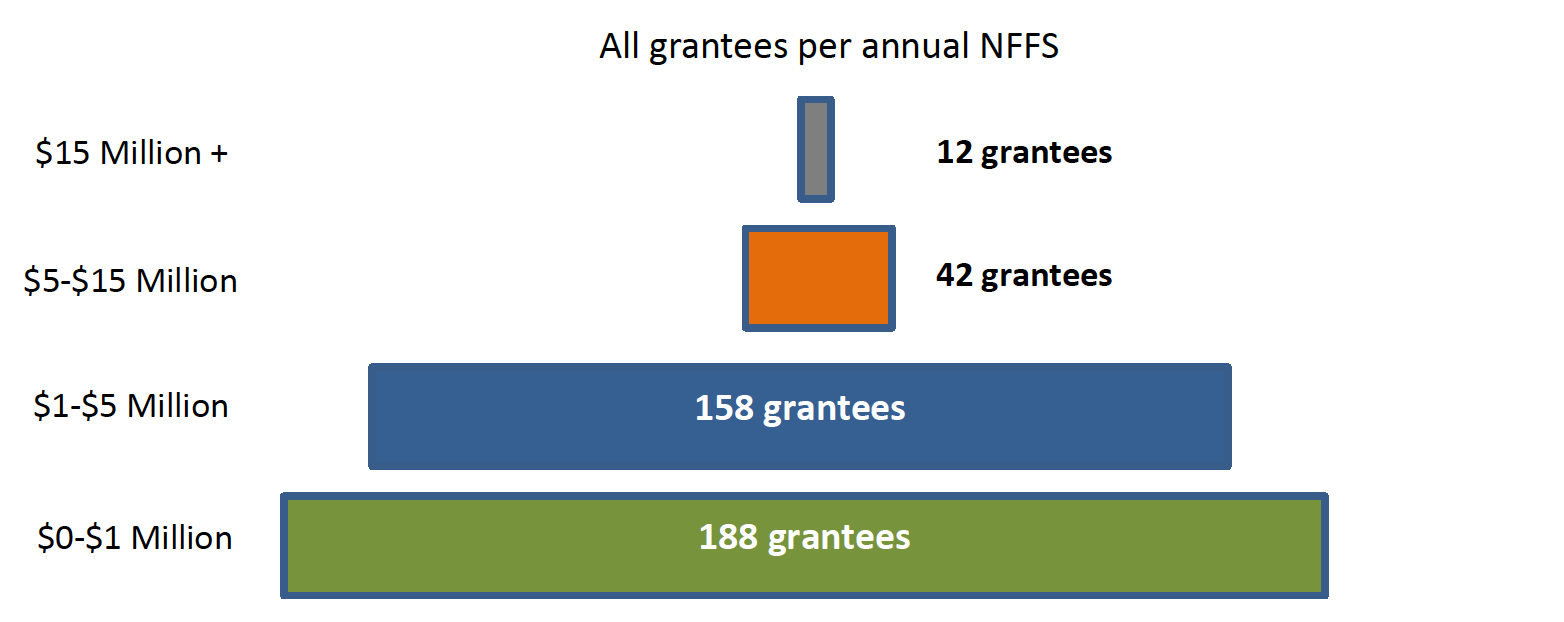Fixing the 'Oops' Factor
Some $92 million will get divvied up this year among the 401 grantees representing the nation’s 1,166 public radio stations. The funding comes in the form of Community Service Grants (CSGs). Every grantee that meets CSG eligibility requirements is entitled to receive a grant.
However, the eligibility rules and formulas for distributing funds have traditionally been quite complex. And over the past few years, they have led to some unintended consequences. Let’s call it the ”oops” factor.
Simply put, richer radio stations got richer. Poorer stations, usually those in economically challenged areas, often struggled to qualify for even a small share of taxpayer dollars.
Last week, the Corporation for Public Broadcasting voted to make things fairer. Its board approved recommendations from a panel of public-radio stakeholders who spent a year figuring out how to alter some of the eligibility requirements and distribution formulas to allocate the dollars differently. Their report deemed the recommendations “transformational.”
“We undertake these periodic reviews in order to adjust our system in response to changes in the economy and in demographics,” explained Kathy Merritt, CPB’s senior vice president of radio and journalism, “This leads to a fairer and healthier system.”
Bottom line: Smaller stations should get a few more federal dollars. Larger stations will get less in base grants (although they will still get significant incentive dollars for raising non-federal money). Because the federal funding level for CPB has been flat for several years and the pool of CSG funds has remained the same, when some stations gain, others have to lose. (That might change in a couple of years. Congress this week added $20 million to CPB’s FY2022 budget.)
At the crux of the problem are … listeners like you.
Base grants for all stations depend on how much Non-Federal Financial Support (NFFS) they can raise in a given year. That involves donor and underwriting dollars and, for some stations owned by universities or other institutions, a portion of their indirect administrative support. The amount of NFFS a station can raise has always been considered “a gateway to federal support,” the report noted.
CSG grants support a wide range of stations, from those that serve small towns of just a few hundred people to major metro areas with millions of listeners. Programming can range from news and talk, to classical, jazz or AAA music.
Forty percent of CSG radio recipients qualify as rural; 20% as minority. These stations especially depend on their CSG grants and generally qualify for a little extra funding.

Consider that nearly half of the grantees have annual NFFS under $1 million and some struggle to raise even $250,000 annually. But 12 stations bring in more than $15 million in NFFS. These larger stations are growing fast and raising “unprecedented” amounts of NFFS, the panel reported.
Herein lies the “oops” factor. The formula that was being used shifted significant federal money to the 10 largest grantees to match their increasing amounts of NFFS.
“The new model fixes a problem, where a small number of large, successful stations were receiving a growing share of the federal matching money. These changes should help rural and lower-income communities continue to receive their fair share of federal funding,” said panel member Scott Finn, president and CEO of Vermont Public Radio.
A key factor in the fix is categorizing stations by “coverage area population” (CAP). This places grantees with similar socio-economic and market conditions together. CAP turns out to be the clearest indicator of a grantee’s potential to raise NFFS funds. Small CAP stations tend to operate in communities with lower household incomes and higher poverty levels.
The changes, which will begin in FY 2021, create six categories of grantees whose CAPs range from less than 20,000 to more than 3 million. Next, the panel recommended aligning minimum NFFS with the CAPs.
Where, previously, the smallest stations had to raise at least $300,00O in non-federal financial support, now they need to raise only $250,000. Largest stations must still raise at least $500,000.
The report estimates that two-thirds of the public radio stations will get increases in funding; the smallest will get an average increase of $23,000 in their base grants. One-third will receive less, ranging from $3,100 to $163,000 less.
So the largest stations that were getting $57,850 in base grants will now get $35,000. The smallest stations that were getting $72,313 will get $90,000. Incentives and multipliers can increase those amounts and are different for each station.
“It’s really hard to know” whether your station will be a winner or loser under the new rules, said Steve Bass, president and CEO of Oregon Public Broadcasting and a member of the panel. “My presumption is we’re going to lose a little bit of money, probably not a lot, probably less than $100,000.”
But he felt it was critical to give the smaller stations more money. He has a couple of Native American stations in his area that are challenged to raise their minimum NFFS, he said. “If you give them $20,000 more, it makes a big difference because it’s hard to raise $20,000 in that environment.”
CPB’s action will also give stations at risk of failing to raise their matching non-federal funds fours years instead of three to get back into compliance. At any given time, there may be as many as two dozen stations struggling to do this.
The panel also discussed but rejected whether, at some point, stations that got large enough should be “graduated out” of the CSG program, said Merritt. “Either we are a system or we are not,” she noted. “The success of the biggest members helps the smallest… and fuels their success.”
Moreover, she added, “We feel the biggest stations can learn from the smallest how to serve community.”
You can subscribe to CPB Ombudsman Reports at https://www.cpb.org/subscribe. Read more CPB Ombudsman Reports here.


